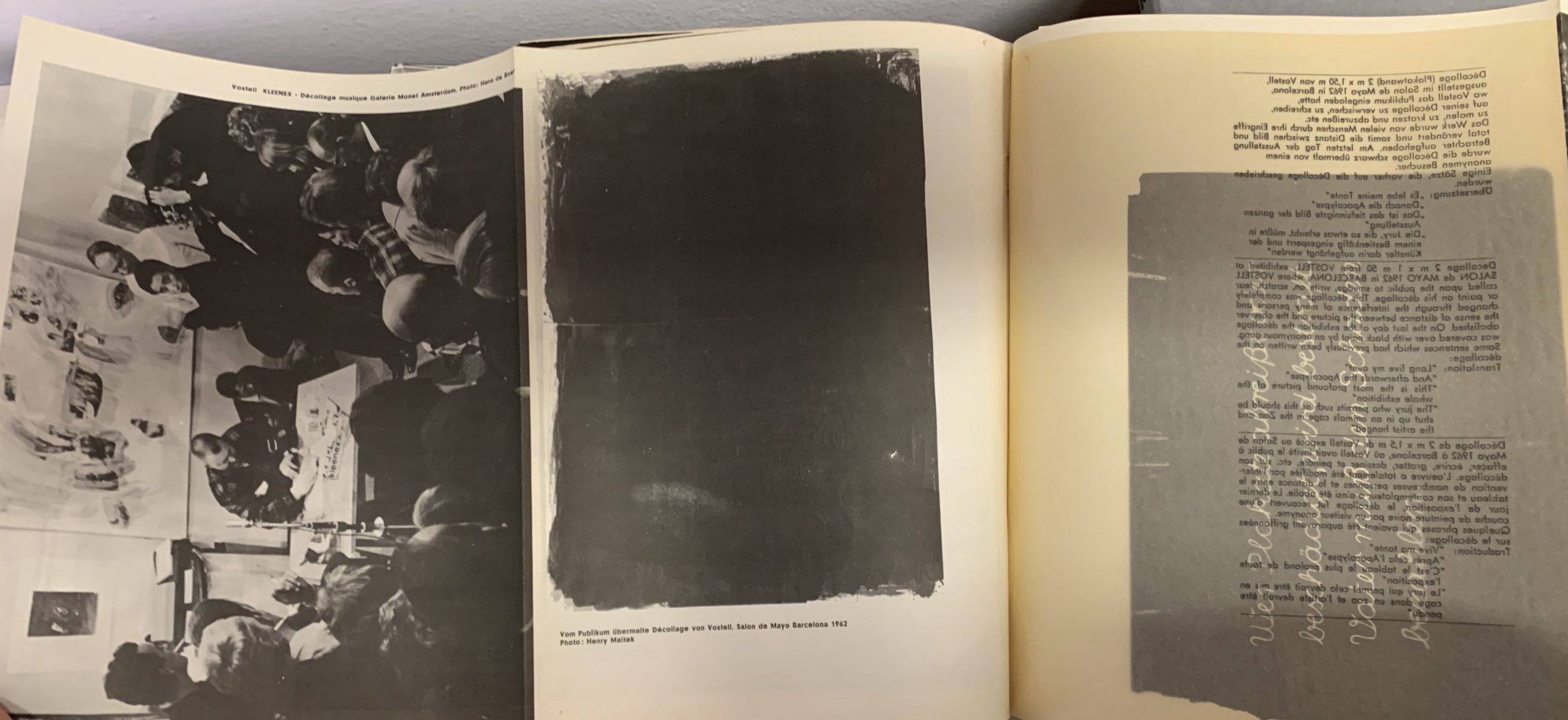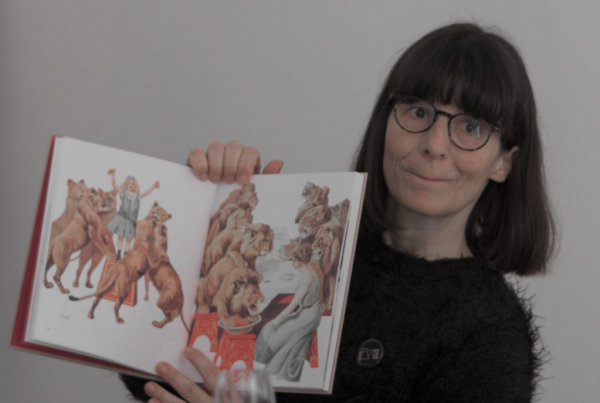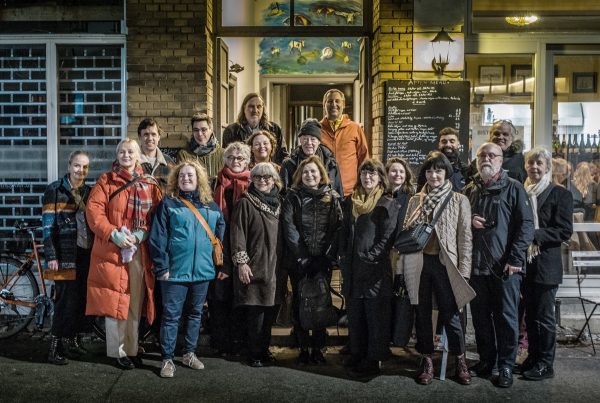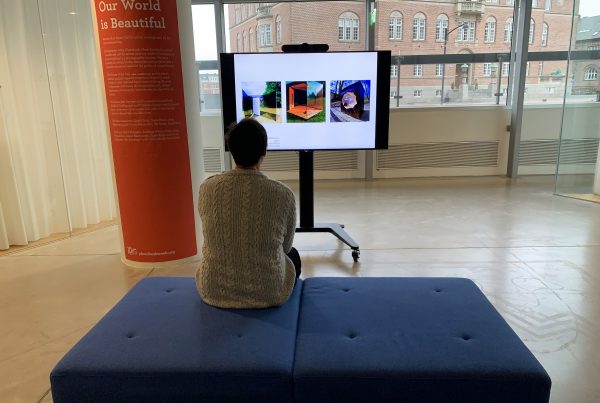A showcasing of multiples and books in collaboration with Photobook Week Aarhus (PWA), at HEART Museum, 14.-30.10.2021.
While there has always been little consensus about what Fluxus really was, it is widely recognised that Fluxus played an important role in the broadening of what became to be considered art. After our analysis of Marcel Duchamp’s Readymades and especially his Boîtes as specific milestones on the borderline between sculptures and books, in the framework of PWA 2020, it seems only logical to put our focus on Fluxus Multiples in 2021. Born from the Duchampian legacy and a profoundly radical view about the role of art in society, in the experimental context of the neo-avantgardes, they are serious non-sense-objects packed with small objects to be held in the hand, read and manipulated. These boxes, book-objects, suitcases, envelopes, posters, magazines, postcards and (de-)collages were usually in a signed limited edition and made specifically for selling at accessible prices. The show Multipl-eye-ing Fluxus puts a special focus on the role of artist/editor Wolf Vostell, and features work by many of his well-known friends and colleagues from and around the Fluxus movement.
This exhibition is complemented by the show Flux My Book! at the ARoS Museum, in the framework of PWA 2021.
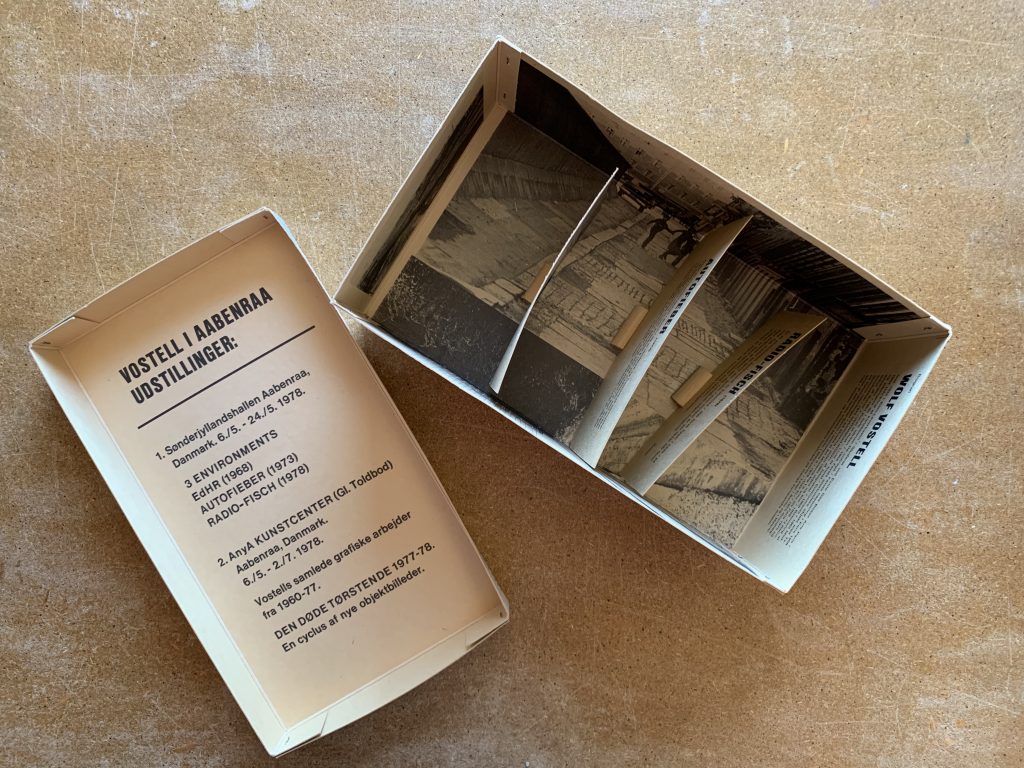
VOSTELL IN AABENRAA
1978
Cardboard printed in b/w, wooden pieces, glue and cardboard cards.
32 x 19 x 11 cm.
Edition of 1000
AnyA Kunstcenter, Aabenraa
This exhibition catalogue in the shape of a shoebox has a text by Heiner Stachelhaus printed on the outer sides of the box (in Danish). The inside is printed with 3 b/w photographs and a text with Vostell’s biography. The exhibition took place in AnyA Kunstcenter, Aabenraa, from May to July 1978. The photographs show some of the pieces on view, such as the famous Radio-Fish, which was completed shortly before the exhibition took place.
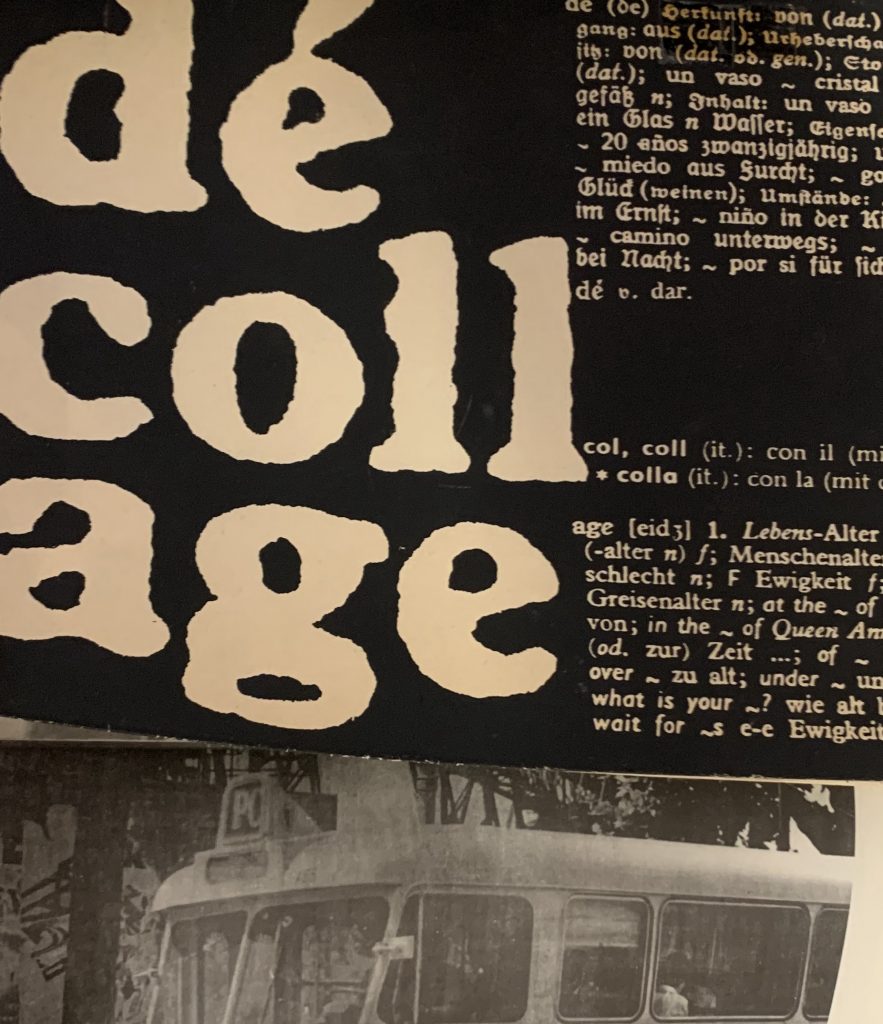
DE-COLL/AGE. Bulletin of current ideas [and art after 1960]. Edited by Wolf Vostell.
Nos. 1, 3 and 6
Cologne / Frankfurt. 1962-1969.
Editions limited to 1000 copies (No. 1 and 3), 700 copies (No. 6).
Wolf Vostell’s “Dé-collage” (a title he later refined as “dé-coll/age”) was undoubtedly the most important German magazine devoted to the writings, manifestos and actions of happenings, Fluxus, New Realism, and the new media avant-garde. It was also the first of its kind, with Vostell, in fact, anticipating the “Fluxus” editions by erge Maciunas in New York. In addition to its texts and scores, these magazines contain important original artworks.
No. 1, June 1962, 7 folding sheets, each assigned to a different artist: Arthur Kopcke, George Maciunas, Benjamin Patterson, Braun, Name June Paik, Pera, Wolf Vostell, La Monte Young.
No. 3, December 1962. Texts and images by 14 contributors, including Christo, Henry Flynt, Dick Higgins, György Ligeti, Franz Mon, Paik and Vostell himself. It consists of numerous folding sheets; fragments printed in red and on different cardboards.
No. 6, July 1967 (“Bulletin of Fluxus and avant-garde Happening”) Texts and images, including multiple by Diter Rot, alias Dieter Roth (“das blaue Geheul,” blue felt-tip pen on white photo printed on cardboard); Daniel Spoerri, Stefan Wewerka, Gustav Metzger, Lebel, Mon, Tinguely, Vostell, Hansen, Kaprow, and others.

